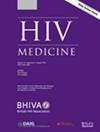Spatial and temporal trends in HIV/AIDS burden among South Asian countries from 1990 to 2021: A systematic examination of the Global Burden of Disease study 2021
Abstract
Background
HIV/AIDS remains a significant public health concern in South Asia, and trends in disease burden vary across the region. This study analyzed spatial and temporal trends in HIV/AIDS from 1990 to 2021 using data from the Global Burden of Disease (GBD) study 2021, focusing on incidence, prevalence, mortality, and disability-adjusted life-years (DALYs).
Methods
We conducted a secondary analysis of GBD 2021 data, applying Joinpoint regression and auto-regressive integrated moving average models to assess trends in HIV/AIDS burden across South Asian countries. We calculated metrics such as average annual percentage change (AAPC), and estimated APC (EAPC) to evaluate temporal trends.
Results
We found significant variations in HIV/AIDS trends across South Asia. India had the highest burden, with a sharp increase in DALYs between 1990 and 2000 with a percentage change (PC) of 184.09, followed by a decline (−0.73 in 2010–2021). Pakistan experienced the highest growth in DALYs and mortality (average PC 36.46; estimated PC 38.65), indicating severe ongoing public health challenges. In contrast, Nepal and Maldives showed notable reductions in both DALYs and mortality rates, reflecting successful intervention efforts. Afghanistan and Bangladesh exhibited fluctuating trends, with slight increases in the initial years followed by stabilization or modest declines. Auto-regressive integrated moving average projections suggested a slight increase in HIV/AIDS incidence by 2031, with mortality rates expected to decline more significantly.
Conclusion
The burden of HIV/AIDS in South Asia varies significantly, with some countries achieving reductions and others, particularly Pakistan, facing rising challenges. Continued and targeted public health interventions are crucial for managing and reducing the burden of HIV/AIDS across South Asia.


 求助内容:
求助内容: 应助结果提醒方式:
应助结果提醒方式:


